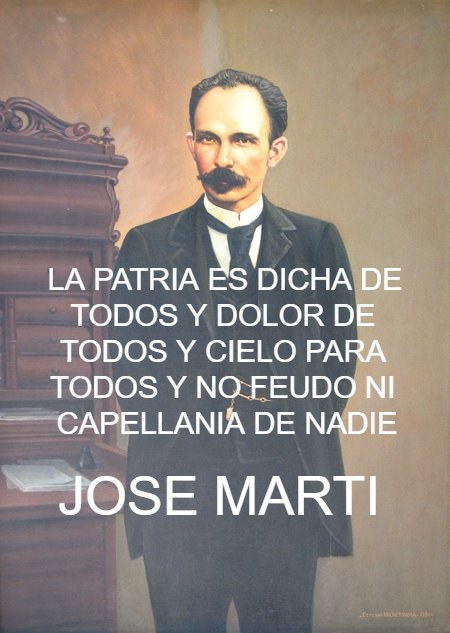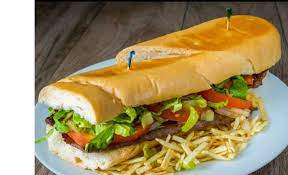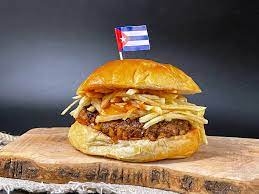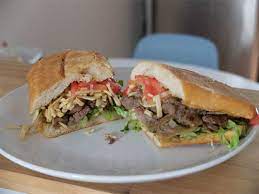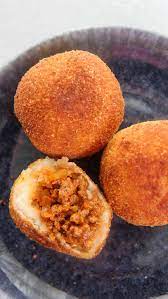
“ANACAONA”, LA ORQUESTA CUBANA FEMENINA CUMPLE 95 AÑOS DE FUNDADA. PHOTOS.
Anacaona es el nombre de una orquesta de chicas todas fundada en 1930 en La Habana por Concepción “Cuchito” Castro. Con el tiempo, las 11 hermanas se unieron a la banda.
La banda se formó durante la era Machado cuando la situación política provocó el cierre de la universidad, lo que obligó a abandonar “Cuchito” de sus estudios y su plan para iniciar una práctica dental. En su lugar, optó por una carrera diferente en 1932, proponiendo un septeto femenino de impugnar la música dominada por los hombres son.
En ese momento, se creía que las mujeres no eran capaces de formar parte tocando los ritmos populares de la época. Ellas probaron lo contrario.
La agrupación debutó ese día del año 1932 en el cine teatro Payret como primer sexteto femenino de son, y a partir de 1934 se convirtió en una de las orquestas más originales de nuestro país, transformándose en Jazz Band o Charanga Típica, alcanzando gran popularidad por sus genuinas interpretaciones en los llamados “Aires Libres del Prado”, ubicado en los exteriores del Hotel Saratoga.
Cinco años después de su debut, la compañía estadounidense RCA Victor grabó tres álbumes al nuevo conjunto de música popular.
Entre el 40 y el 59, sus miembros recorrieron el continente americano de norte a sur, el Caribe y Francia. En México, uno de los más visitados por los Países orquesta en esta etapa se registran imágenes y sonidos en algunas películas de cine mexicano, entre las que se incluyen “The Night”, “No niego mi pasado” y el “teatro de la Mujer” que alternaba con algunas de las más notables figuras de la música mexicana y el cine.
El rendimiento de estos jóvenes habaneros mestizos (madres de mezclas chinas, europea cruzadas con negros) que la ciudad escuchaba con pasion y bailaban con sus canciones de raíces africanas y negrita.
El Conjunto musical alcanzó la fama internacional, pero el magnífico grupo musical cayó en el olvido después de la Revolución Cubana.
A partir de 1983, Anacaona vuelve con nuevos bríos, bajo la tutela de la segunda directora y fundadora de la agrupación musical, Alicia Castro, quien orienta a las hermanas Georgia (bajista) y Dora Aguirre (saxofonista), ambas graduadas del Conservatorio Amadeo Roldán, en la supervivencia de la orquesta, transmitiendoles las experiencias adquiridas hasta 1987 en que se jubila, fecha en la que Georgia asume la dirección del actual formato en compañía de otras jóvenes también egresadas de las escuelas de arte.
La banda fue reorganizada en 1988. Cinco hermanas Castro decidió dejar la banda, que aún está activo bajo la dirección de Georgia y Doris Aguirre, los bajistas de la banda.
Las integrantes de Anacaona, catorce mujeres conocidas como “Las Mulatísimas del Sabor”, además de ser una de las principales exponentes “de los ritmos más tradicionales de nuestra música contemporánea” y de erigirse como defensoras de este patrimonio cultural, ostentan la Condición de formar parte de la ayuda a proyectos sociales como en la que se destacan el dirigido a los niños enfermos de cáncer.
También la orquesta ha participado en varias películas como “La Bella de la Alhambra” del director Enrique Pineda Barnet, “Vidas Paralelas” de Pastor Vega y en la coproducción Cubano-Suiza, “Barrio Negro”, así como en los documentales “La ruta del ritmo” del realizador Harry Belafonte, “Anacaona, 70 Años después” del director Jorge Aguirre, producido por la Televisión Cubana y un documental musical realizado por la NHK de Japón.
ANACAONA es considerada “La Orquesta Femenina Insigne de Cuba” y se cuenta entre las agrupaciones de primer nivel de la música popular cubana.

“ANACAONA”, THE CUBAN WOMEN’S ORCHESTRA CELEBRATES 95 YEARS OF FOUNDATION. PHOTOS.
Anacaona is the name of an all-girl orchestra founded in 1930 in Havana by Concepción “Cuchito” Castro. Over time, all 11 sisters joined the band.
The band was formed during the Machado era when the political situation caused the university to close, forcing “Cuchito” to abandon her studies and her plan to start a dental practice. Instead, she opted for a different career in 1932, proposing an all-female septet to challenge the male-dominated music of the time.
At the time, it was believed that women were not capable of taking part in playing the popular rhythms of the time. They proved otherwise.
The group debuted on that day in 1932 at the Payret cinema theater as the first female son sextet, and from 1934 onwards it became one of the most original orchestras in our country, becoming a Jazz Band or Charanga Típica, achieving great popularity for its genuine performances at the so-called “Aires Libres del Prado”, located outside the Hotel Saratoga.
Five years after its debut, the American company RCA Victor recorded three albums for the new popular music group.
Between 1940 and 1959, its members toured the American continent from north to south, the Caribbean and France. In Mexico, one of the most visited by the orchestra countries at this stage, images and sounds are recorded in some Mexican films, including “The Night”, “No denyego mi pasado” and the “Teatro de la Mujer” which alternated with some of the most notable figures of Mexican music and cinema.
The performance of these young mestizo Havanans (mothers of mixed Chinese, European and black ancestry) that the city listened to with passion and danced to their songs of African and negrita roots.
The musical group achieved international fame, but the magnificent musical group fell into oblivion after the Cuban Revolution.
From 1983, Anacaona returned with new vigor, under the tutelage of the second director and founder of the musical group, Alicia Castro, who guided the sisters Georgia (bassist) and Dora Aguirre (saxophonist), both graduates of the Amadeo Roldán Conservatory, in the survival of the orchestra, transmitting to them the experiences acquired until 1987 when she retired, date in which Georgia assumed the direction of the current format in the company of other young women also graduates of art schools.
The band was reorganized in 1988. Five Castro sisters decided to leave the band, which is still active under the direction of Georgia and Doris Aguirre, the band’s bassists.
The members of Anacaona, fourteen women known as “Las Mulatísimas del Sabor”, in addition to being one of the main exponents of “the most traditional rhythms of our contemporary music” and standing as defenders of this cultural heritage, have the status of being part of the aid to social projects such as the one directed to children with cancer.
The orchestra has also participated in several films such as “La Bella de la Alhambra” by director Enrique Pineda Barnet, “Vidas Paralelas” by Pastor Vega and in the Cuban-Swiss co-production, “Barrio Negro”, as well as in the documentaries “La ruta del ritmo” by director Harry Belafonte, “Anacaona, 70 Años después” by director Jorge Aguirre, produced by Cuban Television and a musical documentary made by NHK in Japan.
ANACAONA is considered “The Distinguished Women’s Orchestra of Cuba” and is counted among the first-class groups of Cuban popular music.

Agencies/ Wiki/ Rad.Habana/ Extractos/ Excerpts/ Internet Photos/ Arnoldo Varona.
www.TheCubanHistory.com
THE CUBAN HISTORY, HOLLYWOOD.




